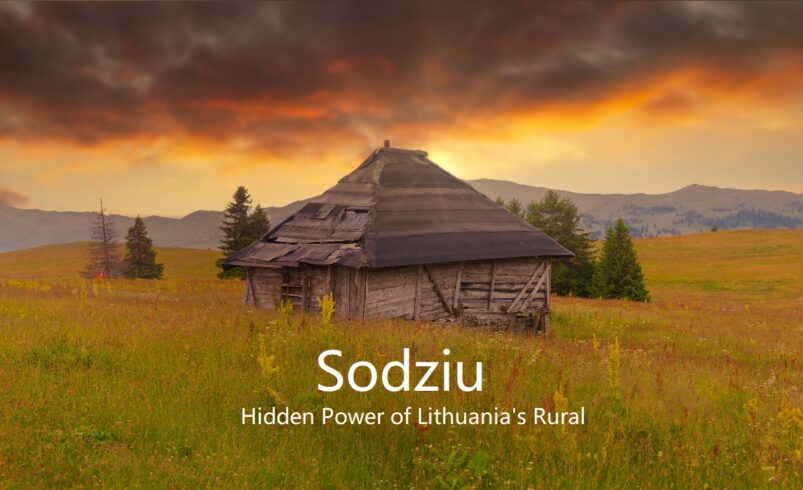Sodziu: The Hidden Power of Lithuania’s Rural Heritage
- September 27, 2025
- 0
In the rolling hills of Lithuania, nestled among the endless stretches of farmland, there’s a word that carries the heartbeat of rural life Sodziu. Imagine a village where

In the rolling hills of Lithuania, nestled among the endless stretches of farmland, there’s a word that carries the heartbeat of rural life Sodziu. Imagine a village where time moves slowly, and every house and field tells a story of generations past. This word, sodziu, isn’t just a term for a village. It’s a living symbol of a traditional way of life, a connection to the land, and a powerful reminder of how the rhythms of nature shape community life.
At its simplest, sodziu (or sodžius) is the Lithuanian term for a rural settlement or farmstead. It refers not just to the physical structures like homes, barns, and fields, but also to the social fabric that binds a community together. A sodziu is a place where work is shared, traditions are passed down, and family ties remain strong across generations.
Historically, sodziu referred to a cluster of homes and farmland centered around a common yard, typical of rural settlements in Lithuania from the 12th to 16th centuries. These farmsteads were designed to serve as self-sustaining units, where families grew their own food, raised livestock, and worked together through the seasons.
While kaimas is the modern word for village in Lithuanian, sodziu has a more nostalgic, culturally charged meaning, often evoking images of traditional life. It’s a concept deeply rooted in rural identity and Lithuanian heritage.
To understand the depth of sodziu, we must look at its historical evolution. The word dates back to the medieval period, when early Lithuanian society was largely agrarian. During the 12th to 16th centuries, communities were organized around the sodžius a self-contained settlement that typically consisted of a main family house, a barn, a workshop, and surrounding fields for cultivation.
These settlements were more than just clusters of houses. They were centers of communal activity where the family worked the land together, and neighbors helped each other with seasonal chores like planting, harvesting, and building. The sodziu wasn’t just about farming. It was about community cooperation, and each family had its role to play in the greater well-being of the settlement.
Fast forward to the present day, and Lithuania’s urbanization has drastically shifted the country’s demographic landscape. In 2023, approximately 31% of Lithuanians still live in rural areas, though urbanization continues to grow. The term sodziu may not be used as frequently as it once was in daily conversation, but its symbolic importance is alive and well, especially among those who cherish their rural roots.
Even in Lithuania’s modern cities, the word sodziu is often invoked when discussing heritage, family traditions, and the connection to the land. As rural areas face depopulation, the value of preserving rural culture becomes all the more apparent.
While urbanization and modernization threaten traditional ways of life, sodziu remains an important cultural symbol. As people around the world face the pressures of globalization, the authenticity and self-sufficiency of rural communities become more appealing. Sodziu is a reminder that community and tradition still have a place in the modern world.
In the fast-paced modern world, the concept of sodziu serves as a beacon of cultural heritage and community resilience. While rural Lithuania faces its challenges, the legacy of sodziu reminds us of the importance of tradition, family, and the land. Whether through festivals, artisan crafts, or sustainable farming, the spirit of sodziu is alive and well.
Q1. What is the meaning of Sodziu in Lithuanian?
A. Sodziu (or sodžius) refers to a traditional rural settlement or farmstead in Lithuania, where families lived together, shared work, and maintained close community ties. It symbolizes a historic way of life that is still revered today.
Q2. Is Sodziu still relevant in modern Lithuania?
A. Yes, while urbanization is on the rise, sodziu still holds cultural significance in Lithuania. It is often celebrated in festivals and artisanal craftsmanship and serves as a symbol of Lithuanian heritage.